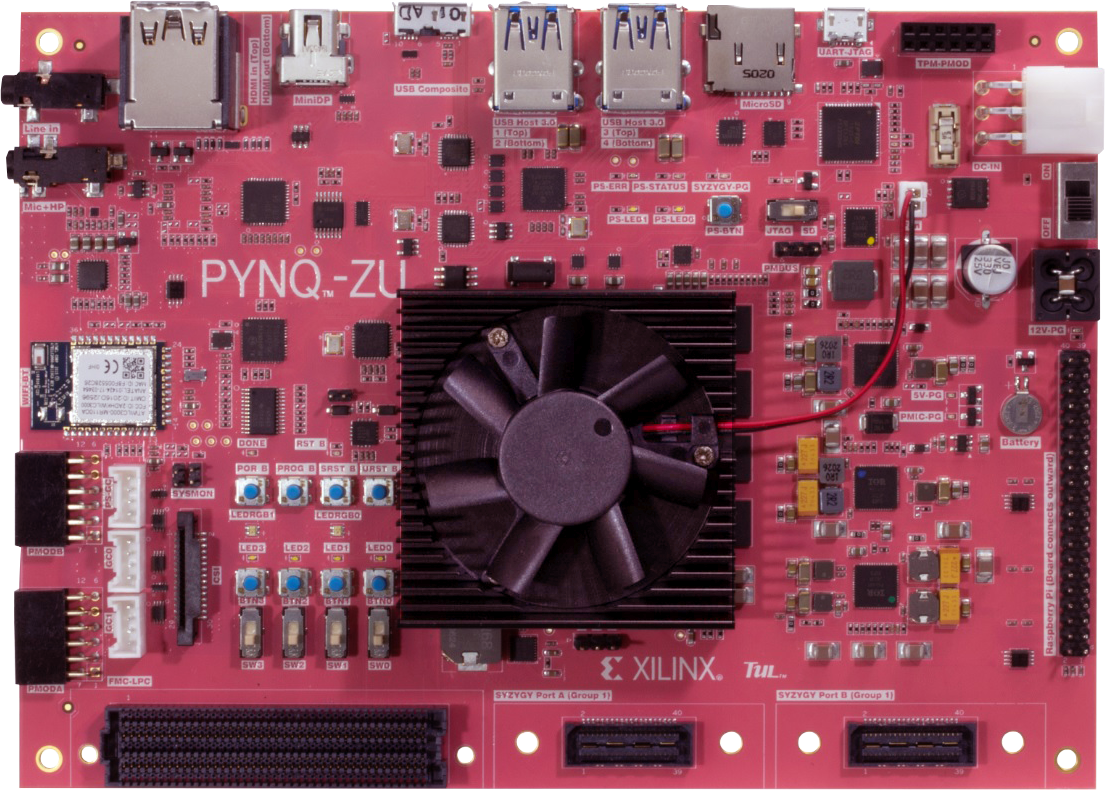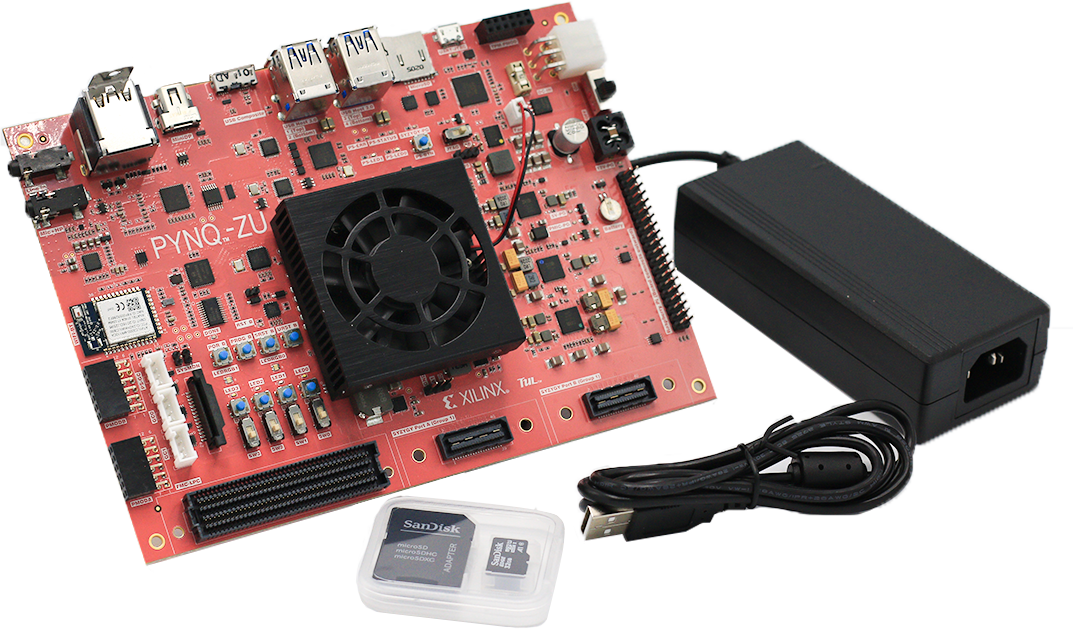PYNQ-ZU
The PYNQ-ZU board is a high-performance hardware & software development platform based on the ZYNQ XCZU5EG UltraScale+ SoC from AMD. The ZYNQ device contains a 64-bit quad-core ARM Cortex-A53, a dual core ARM Cortex-RF5, a large array of programmable logic cells, a Mali-400 based GPU, a Display Port controller, USB controllers, and many other high-performance subsystems. The ZYNQ device is supported by 4GBytes of fast 64-bit DDR4 memory, USB3 ports, HDMI and DisplayPort video ports, WiFi and Bluetooth radios, and many other ports and peripherals. The PYNQ-ZU board works with the PYNQ open-source framework and all AMD Vitis/Vivado tools.
The PYNQ framework is an open-source environment that makes it easier to use AMD adaptive platforms. PYNQ is based on Jupyter and provides a Python-based interface to load hardware overlays and control the programmable logic, without the need for ASIC-style, hardware-centric design tools. The framework greatly simplifies the process of using of customized hardware in digital systems, and lets a broader range of engineers realize the benefits of using custom hardware in their digital systems.
$549.00
- Xilinx ZYNQ XCZU5EG UltraScale+
- Quad core ARM Cortex-A53, Dual core ARM Cortex–R5F
- FPGA with 256K logic cells, ,1248 DSP slices, 5.1Mbit block RAM
- 4GBytes 64-bit, 2400MHz DDR4
- USB3 host port
- USB2 port for power, programming, and COM port
- HDMI source and HDMI sink ports
- Mini DisplayPort
- I2S codec with 24-bit input and output audio ports
- 5 pushbuttons, 4 slide switches
- 6 LEDs, 2 RGB LEDs
- FMC LPC connector
- 2 SYZYGY standard ports
- Raspberry Pi connector
- 2 standard Pmod ports and 1 TPM Pmod port
- PYNQ ZU board
- Power supply
- 8GByte MicroSD card
- USB cable

